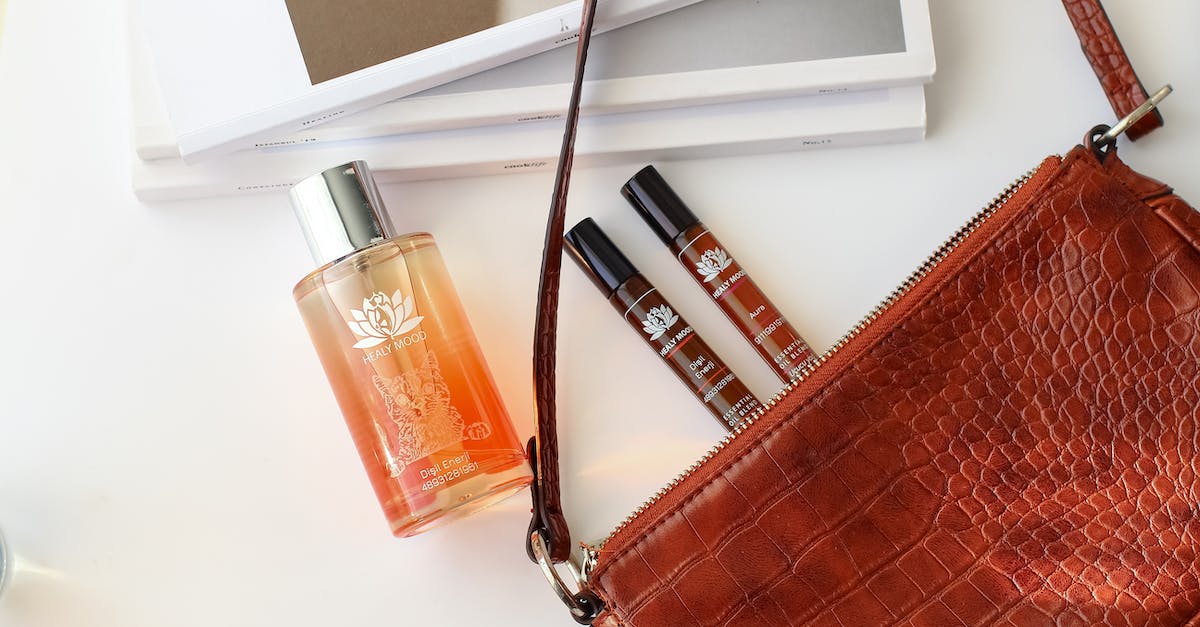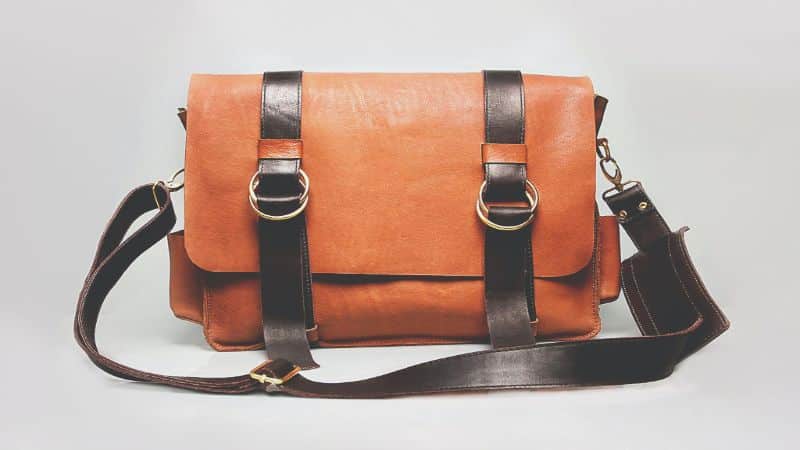You’ve finally found the perfect purse, the one that complements every outfit and holds your life together. But what’s this? After a few months, the material starts to peel, and it’s looking less chic by the day. Frustrating, right?

Don’t worry, you’re not alone in this struggle. Keeping your purse from peeling is a common challenge, but it’s not insurmountable. With the right care and a few insider tips, you can extend the life of your beloved accessory.
Why do purses peel?
Got a peeling purse? Here’s the lowdown. Purses peel due to a variety of reasons. Sometimes it’s just low-quality materials; other times, improper care plays a culprit. You might not realize, but frequent use also stresses your purse, particularly if it’s made of faux leather.
Here’s a quick primer on materials:
- Genuine leather is durable but needs maintenance to prevent cracks and peels.
- Faux leather is prone to peeling with wear and tear, and exposure to harsh elements.
- Patent leather may peel if exposed to excessive heat or sticky substances.
Think about how you’re handling your purse. Are you overstuffing it? Tossing it around? All of these can accelerate wear.
Let’s talk about moisture and heat—they’re not friends with your purse. These elements cause materials to expand and contract, leading to peeling around the corners and folds.
Here’s what can happen without proper storage:
- Heat exposure (e.g., leaving your purse in a car on a sunny day)
- Chemical damage (e.g., alcohol from hand sanitizers)
- Physical abrasions (scratches from keys, friction against clothing)
Remember: the right care routine can make a world of difference. Keep your bag clean, store it properly, and avoid overloading. Treat your purse well, and it’ll stay peeling-free for a longer time.
Choosing the right material
When you’re in the market for a new purse, the material it’s made of should be at the top of your checklist. Genuine leather is often praised for its durability and ability to age gracefully. However, it requires regular maintenance to prevent peeling. If you’re leaning towards this classic choice, be ready to invest some time in upkeep.
For a more fuss-free option, consider high-quality faux leather. Modern advancements have produced synthetic materials that can rival the appearance and longevity of real leather. But not all faux leathers are created equal. Sticking with reputable brands ensures you get a purse that won’t start to peel after just a few outings.
On the other hand, patent leather, with its shiny finish, can offer a chic look but might be more prone to cracks and peeling. It’s crucial to weigh the aesthetic benefits against the potential longevity issues.
Here’s a quick rundown of the most common materials and their peeling potential:
| Material | Peeling Potential |
|---|---|
| Genuine Leather | Lower with care |
| Quality Faux Leather | Moderate |
| Patent Leather | Higher |
Caring for your purse also depends on the material. For genuine leather, use a conditioner to maintain its elasticity. For faux and patent leather, wiping with a damp cloth can help to keep the material from drying out and peeling.
Remember, the way a purse is constructed can affect its tendency to peel as well. Stitched seams tend to hold up better than glued ones. Checking how the handles are attached and how the seams are finished can give you clues about the purse’s potential lifespan.
Investing in the right material from the start will save you from the frustration of a peeling purse down the line. Select wisely and remember that although initial costs may be higher for quality items, you’re actually saving in the long haul by not having to replace your purse frequently.
Proper cleaning and maintenance
When it’s about maintaining your purse to prevent peeling, start with regular cleaning. Depending on the material, different approaches apply. For genuine leather, you’re looking at a routine of wiping with a damp cloth and using a specialized leather conditioner. Avoid aggressive scrubbing which can damage the surface.
If you’ve opted for high-quality faux leather, cleaning’s easier. Mild soap and water usually do the trick. Wipe gently; then, lay your bag to dry away from direct sunlight which can cause the material to deteriorate faster.
Patent leather, with its glossy finesse, demands extra care. Use a microfiber cloth and patent leather cleaners to remove scuffs and stains. This helps maintain the luster without exposing the material to harsh chemicals.
Here are a few general maintenance tips:
- Store your purse properly when not in use. Fill it with bubble wrap or a soft cloth to maintain shape.
- Shield your purse from prolonged exposure to sunlight and heat as they can accelerate peeling.
- Avoid overloading your purse. Excess weight can strain the material, leading to cracks and ultimately, peeling.
« How to Stop Buying Handbags: Embrace Minimalism & Curb Your Urge
Handbag vs Satchel: Choose Your Perfect Accessory with This Style Guide »
For each and every purse material, address stains immediately. The longer you wait, the harder they are to remove. And for heaven’s sake, never toss your purse in a washing machine. The rigorous agitation is a one-way ticket to damage-ville.
Remember, the more effectively you clean and maintain your purse, the longer you’ll enjoy its pristine condition. Go for products that match your purse’s specific needs, and always test them on a small inconspicuous area first. Treat your purse like the investment it is. With vigilant care, you significantly reduce the risk of peeling and keep your accessory in top-notch shape for all those double-takes and compliments.
Protective measures
When caring for your purse, prevention is key. The first step is covering it when not in use. Slip your purse into a soft, breathable dust bag to shield it from direct light and dust. This minimizes exposure that can cause the material to degrade and eventually peel.
Next, consider the products you apply. Use protectant sprays, especially for leather bags, to create a barrier against moisture and stains. Remember to test in a discreet area first to ensure there’s no discoloration. For faux leather, occasionally wiping with a protectant can extend your purse’s life.
Being mindful of where you set your purse is also crucial. Avoid rough surfaces or any that can transfer dyes and liquids onto your purse’s material. Sharp edges can scratch and peel the outer layers of the material. Think about where and how you place your purse down.
What goes inside your purse matters as well. Don’t overload it. Extra weight can strain the material, causing it to stretch and crack over time. Keep your purse’s shape and surface intact by carrying only essentials.
Weather conditions can’t be ignored. Don’t let your purse get damp. Water spots can mark and weaken materials, leading to peeling. If caught in a sudden downpour, gently wipe off any moisture and let your purse air dry away from heat sources.
Rotate your purses regularly to prevent overuse of one bag, which can lead to wear and peeling. Regular rotation not only gives each purse a break but also allows you to enjoy a variety of styles in your wardrobe.
Taking active steps to protect your purse will maintain its appearance and functionality for years. Treat it carefully, and it’ll stay a cherished part of your collection.
When to seek professional help
Sometimes, despite your best efforts, your purse might exhibit signs of wear that go beyond what can be addressed at home. In certain situations, it’s vital to recognize when to seek professional help. Excessive peeling or cracking is a clear sign that it’s time to consult a specialist.
Look out for these indicators:
- Widespread Peeling: If you notice extensive peeling, especially in high-contact areas like the straps or closure, professional intervention may prevent further damage.
- Deep Cracks: Deep cracks in the leather can signify severe dryness that might require rehydration techniques only professionals can perform.
- Color Fading or Staining: When you spot serious discoloration that DIY methods can’t fix, a professional can often re-dye or treat the leather to restore its original hue.
- Structural Damage: Issues like broken hardware or tears in the fabric necessitate an expert’s touch to ensure your purse retains its shape and functionality.
Leather repair shops possess the necessary tools and know-how to rejuvenate your bag. They can often work miracles on items you might think are beyond saving. Additionally, these professionals can provide preventative maintenance advice tailored to your specific purse’s needs.
To find a reputable service, seek out recommendations from luxury boutiques or conduct research online. Always check reviews and past work before entrusting someone with your valued accessory.
Remember, investing in professional care can significantly extend the lifespan of your purse. With their advanced techniques and materials, professionals can often reinforce the purse’s structure, mend aesthetic flaws, and give your cherished item a fresh lease on life. Don’t wait until it’s too late; giving your purse the professional attention it may need is part of responsible accessory ownership.
Conclusion
Taking care of your purse is a simple yet effective way to ensure its longevity and beauty. Remember, regular maintenance goes a long way in preventing peeling and keeping your accessory looking as good as new. Don’t hesitate to seek professional help when the situation calls for it—your purse will thank you for the extra care. Here’s to many more years of stepping out in style with your favorite purse by your side!
Frequently Asked Questions
How can I clean my genuine leather purse without causing damage?
To clean your genuine leather purse, use a damp cloth to remove dirt and apply a specialized leather conditioner afterward to maintain its condition and prevent peeling.
What is the best way to care for high-quality faux leather purses?
For high-quality faux leather purses, gently clean using mild soap mixed with water. Wipe it with a soft cloth in a circular motion, then dry it with another clean, dry cloth.
Can I use regular cleaners on my patent leather purse?
No, regular cleaners may damage patent leather. Instead, use a microfiber cloth along with patent leather cleaners designed specifically for this type of material.
How should I store my purse to prevent peeling?
Proper storage is key to preventing peeling. Keep your purse in a cool, dry place away from direct sunlight and heat. Consider using a dust bag and avoid hanging your purse to prevent shape distortion.
What immediate actions should I take if my purse gets stained?
If your purse gets stained, address the stain immediately following the purse’s cleaning instructions. For leather, spot-clean with a damp cloth, while more stubborn stains may require a professional’s assistance.
When should I seek professional help for purse maintenance?
Seek professional help if you notice excessive peeling, deep cracks, color fading or staining, or structural damage. A reputable leather repair shop can provide professional care to extend your purse’s lifespan.










